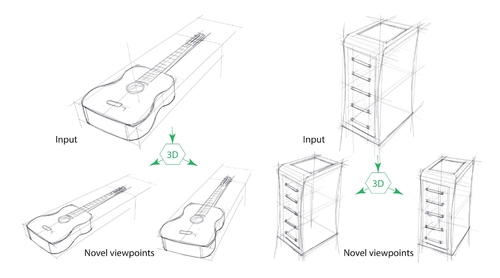Pre-recorded Sessions: From 4 December 2020 | Live Sessions: 10 – 13 December 2020
4 – 13 December 2020
Pre-recorded Sessions: From 4 December 2020 | Live Sessions: 10 – 13 December 2020
4 – 13 December 2020
#SIGGRAPHAsia | #SIGGRAPHAsia2020
#SIGGRAPHAsia | #SIGGRAPHAsia2020











Date/Time:
04 – 13 December 2020
All presentations are available in the virtual platform on-demand.
Lecturer(s):
Yulia Gryaditskaya, CVSSP, University of Surrey; Institut national de recherche en informatique et en automatique (INRIA) Université Nice Cote d'Azur, United Kingdom
Felix Hahnlein, Institut national de recherche en informatique et en automatique (INRIA) Université Nice Cote d'Azur, France
Chenxi Liu, University of British Columbia, Canada
Alla Sheffer, University of British Columbia, Canada
Adrien Bousseau, Institut national de recherche en informatique et en automatique (INRIA) Université Nice Cote d'Azur, France
Bio:
Description: We present the first algorithm capable of automatically lifting real-world, vector-format, industrial design sketches into 3D, by detecting 3D intersections and estimating 3D depth of artist strokes. Targeting real-world sketches raises numerous challenges due to inaccuracies, use of overdrawn strokes, and construction lines. In particular, while construction lines convey important 3D information, they add significant clutter and introduce multiple accidental 2D intersections. Our algorithm exploits the geometric cues provided by the construction lines and lifts them to 3D by computing their intended 3D intersections and depths. Once lifted to 3D, these lines provide valuable geometric constraints that we leverage to infer the 3D shape of other artist drawn strokes. The core challenge we address is inferring the 3D connectivity of construction and other lines from their 2D projections by separating 2D intersections into 3D intersections and accidental occlusions. We efficiently address this complex combinatorial problem using a dedicated search algorithm that leverages observations about designer drawing preferences, and uses those to explore only the most likely solutions of the 3D intersection detection problem. We demonstrate that our separator outputs are of comparable quality to human annotation and demonstrate that the 3D structures we recover enable a range of design editing and visualization applications, including novel view synthesis and 3D-aware editing of the depicted shape.
